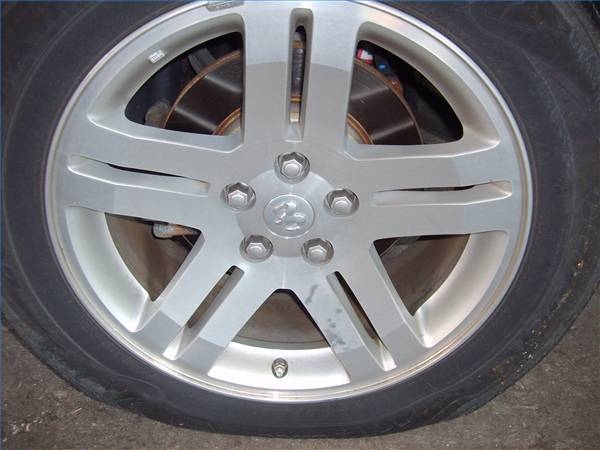What are flat tires? That sounds like asking what is the meaning of life. But the definition here might just save you from being left on the side of the road. Knowing the causes of flat tires, how to prevent them and the best way to fix flat tires, can be as important as the flair and tire wrench.

There is a joke people use when they drop off a tire for repair, they'll say, "It's only flat on the bottom." Is that the definition of a flat tire--one that is completely flat with zero pressure? Actually it is best for motorists to consider as flat any tire that has lost 30 percent of its recommended pressure. Let's assume that the tire was inflated properly at the last oil change--say 2000 miles ago. The tire is checked and it's is down to 20 psi from 32 psi posted on the door. That tire is flat and needs attention. OK, maybe your allowed to properly inflate it once and check it in a few days. But it's just not a good idea to wait for the tire fairy to work her magic.

Tire manufacturers define damage to a tire, that is suffered on the road, as a road hazard injury. It would include anything you might encounter in the roadway including potholes. Unfortunately, these are usually not covered by new tire warranties unless you pay extra at the time of purchase. Then there are flat tires caused by defects in material or workmanship. These are covered by inherent warranties, but compensation is dependent upon an evaluation by the tire company. Flat tires are also caused by breakdowns in the vehicle's steering or suspension systems, but usually it takes some time for these conditions to cause a tire to go flat. Vandalism is also a flat tire cause. Look for pinholes in the sidewall. Two concurring flat tires on the same side of the car are dead give-ways.

Besides being out of or low on air, what are flat tires like? Punctured tires that retain the object like a bolt tend to lose air slowly. The technician can tell how long you have been driving around with the bolt in your tire by how much of the head of the bolt has worn down. Probably the worst thing that can show up in your tire is an industrial staple. It makes two distinct holes about a half inch apart often requiring a tire replacement. The flat tires your mechanic hates to see are ones with the steel cord hanging out. Of course, these need to be replaced but still present a danger to the service person's hands while dismounting the tire. A tire can also go flat through no fault of its own. The wheel can be damaged due to a pothole or an wheel can rust on the inside and prevent the tire bead from seating properly. A tire that is not fully inflated and is exposed to water will go flat if it freezes overnight as ice forms between the tire bead and the rim.

Considering the road environment, flat tires are inevitable. Even run flat tires suffer damage in extended low pressure episodes. So with little chance of a solution to the flat tire, the next best strategy is prevention. Avoiding debris in the road and slowing down in advance of potholes are obviously part of the plan. So how else can you prevent being caught with a flat tire? Try to anticipate tire problems. New tires with lots of meat on the tread can absorb an object that would puncture a well worn tire. So something like a small screw just makes a ticking sound and gives you the chance to remove it from a new tire. While a worn tire in the same scenario would leave you flat. A monthly walk around your vehicle is the best prevention. If it looks low don't leave it to chance and put an air gauge on it. If you're more than a few pounds short, have it checked. Include a tire evaluation each time you get your car serviced. It should not cost you anything. If it does, maybe you shouldn't be getting your work done there.

The remedy for a flat tire is of course the repair. The tire should always be removed from the rim and patched from the inside. The combination plug and patch does an excellent job reinforcing the damaged area and filling the puncture hole with repair material so the steel cord does not rust. Accessing the inside of the tire also allows the technician to fully examine the tire. Sometimes the damage goes beyond the puncture. A long nail for example can also be tearing up the inside of the sidewall as well. Use fix-a-flat (aerosol can type) only in extreme emergencies. Always tell the repair facility you have used it. Some early versions of the product used a flammable propellant and all types present a mess for the repair person. Adhesives used with patches do not work well unless all the liquid form the fix-a-flat is removed. Finally, you would be amazed at how quickly a completely flat tire, running on the rim, will destroy the inner liner of an otherwise repairable tire. Assume the tire has zero tolerance for zero psi.
